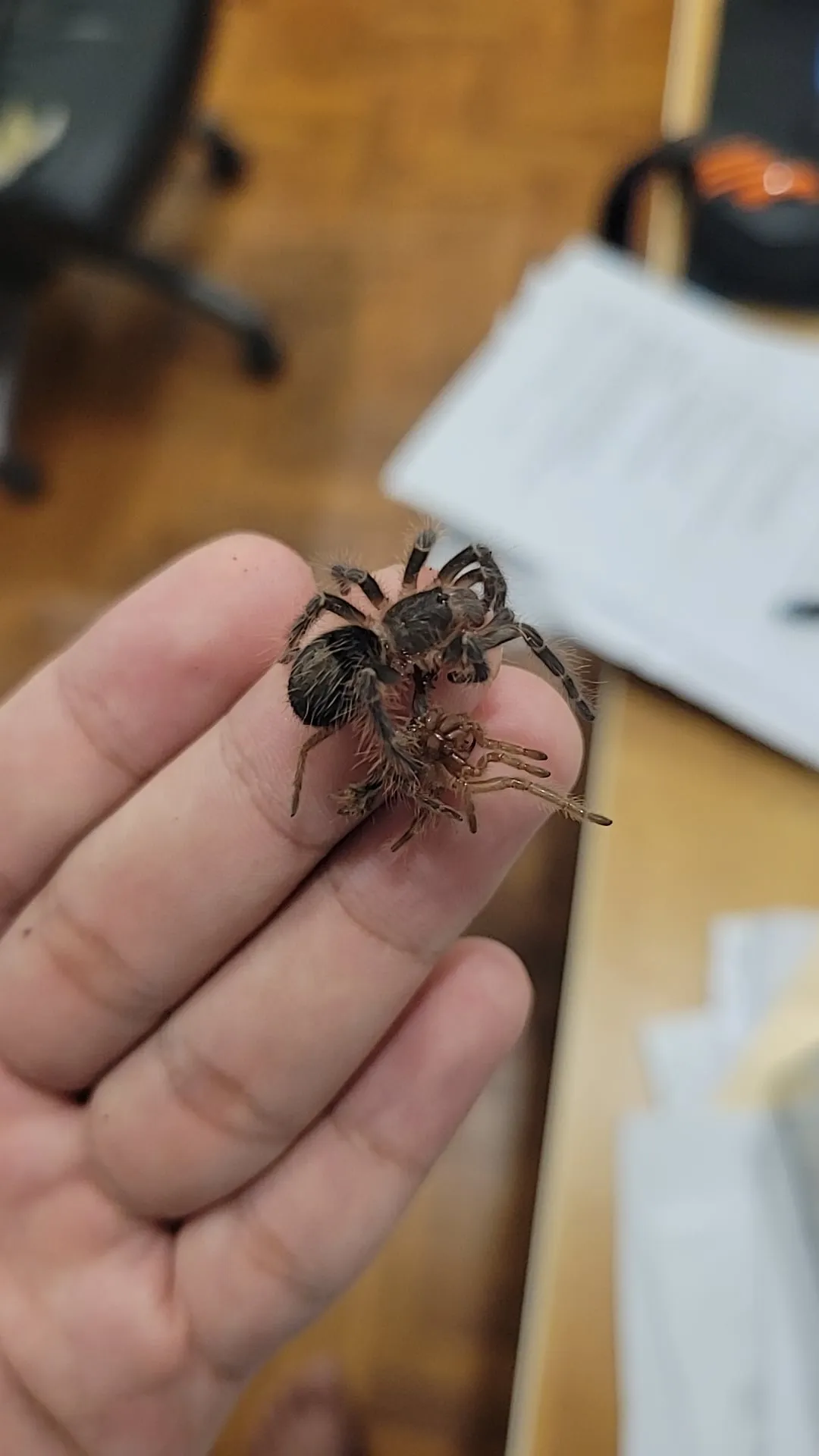What is Molting for a Tarantula?
Molting is a fundamental biological process for tarantulas, crucial for their growth and survival. Unlike mammals, tarantulas possess an exoskeleton, a hard, external covering that protects their bodies. This exoskeleton, however, doesn’t grow. As the tarantula grows, it outgrows its exoskeleton. Molting is the process by which the tarantula sheds its old exoskeleton and reveals a new, larger one beneath. This process allows the tarantula to increase in size, regenerate lost limbs, and shed parasites. The frequency of molting depends on the tarantula’s age, with younger tarantulas molting more often than adults. Molting is a vulnerable time for tarantulas, making them susceptible to injury.
The Molting Process Explained
The molting process is a complex sequence of events. It begins internally as the tarantula prepares for the shedding of its exoskeleton. The process is controlled by hormones, signaling the body to initiate the changes. This includes the formation of a new, soft exoskeleton beneath the old one. The old exoskeleton gradually separates from the body, a process called apolysis. A molting tarantula often displays changes in behavior, such as loss of appetite and lethargy. They might also create a molting mat of silk to provide grip and protection during the process. Before the molt, the tarantula absorbs fluids into its body, which helps to swell and split the old exoskeleton.
Preparing for the Molt
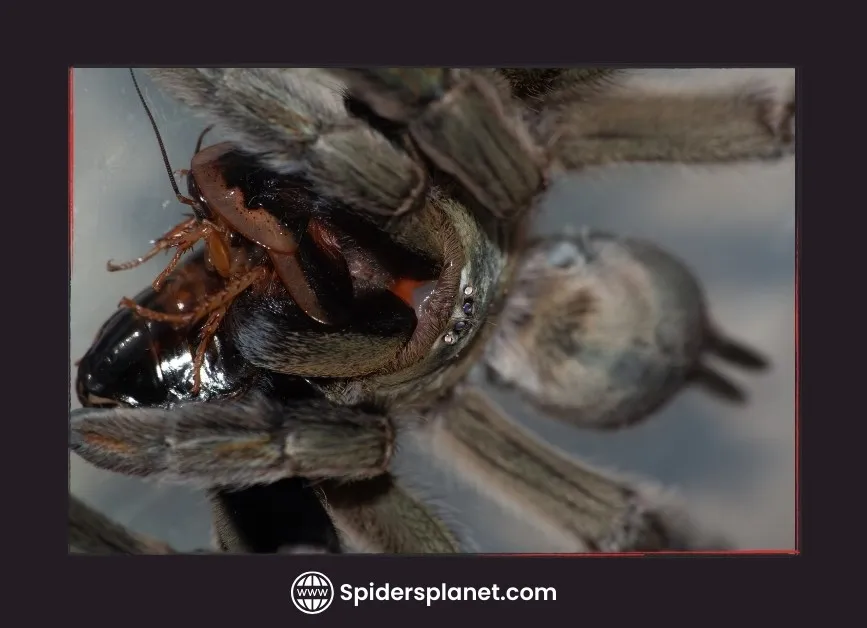
As a tarantula nears its molt, you might observe several behavioral and physical changes. The tarantula typically stops eating, conserving energy for the demanding process ahead. Its abdomen may appear darker or swollen. The tarantula will often construct a molting mat, a bed of silk, which offers a secure and stable surface for molting. This silk mat provides a better grip, which aids in the process of shedding the old exoskeleton. The tarantula might also become less active, spending more time in a secluded area of its enclosure. Proper preparation can involve providing a humid environment, which facilitates the molting process and reduces the risk of complications.
The Shedding of the Exoskeleton
The actual shedding of the exoskeleton is a remarkable feat. The tarantula lies on its back, and the old exoskeleton splits along predetermined lines, usually along the carapace (the top shell) and the abdomen. Through a series of muscular contractions and the intake of hemolymph (the spider’s equivalent of blood), the tarantula gradually pushes itself out of the old shell. This process can take anywhere from a few minutes to several hours, depending on the size and health of the tarantula. Once the old exoskeleton is shed, the tarantula is left with a new, soft, and vulnerable exoskeleton. The tarantula will then slowly harden its new exoskeleton.
Do Tarantulas Eat Their Molt?
The answer to whether tarantulas eat their molt is generally yes, but it is not a universal behavior. Many tarantulas will consume parts of their shed exoskeleton, particularly the soft portions. This behavior is driven by several factors, including nutrient reabsorption and resourcefulness. The molt contains valuable nutrients that the tarantula can recycle, making it a valuable resource. The practice of eating the molt is primarily observed with younger tarantulas. As they molt, they often consume the discarded exoskeleton to conserve resources. Older tarantulas might be less inclined to consume their molt, often leaving it behind.
Why Tarantulas Might Eat Their Molt
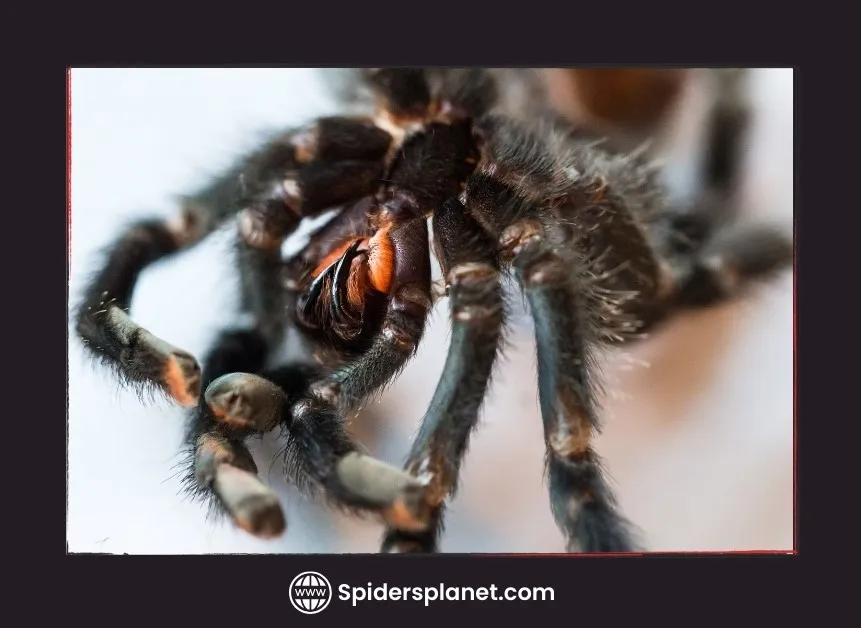
Several reasons explain why tarantulas eat their molt. Firstly, the exoskeleton, while seemingly just a discarded shell, contains essential nutrients. Chitin, a major component of the exoskeleton, is a source of nutrients. By consuming the molt, the tarantula can reclaim valuable resources and conserve energy. Furthermore, in the wild, tarantulas face environmental pressures, including food scarcity. Eating the molt is a survival mechanism, ensuring that no resources are wasted. This behavior is especially common in younger tarantulas, who are still growing rapidly and have greater nutritional needs. The practice is driven by instincts and the need to conserve nutrients.
Nutrient Reabsorption
The primary reason for eating the molt is the reabsorption of nutrients. The exoskeleton is composed of chitin, a complex carbohydrate, and contains other trace minerals and nutrients. By consuming the molt, the tarantula can recycle these essential building blocks, reducing the need to expend energy on obtaining new nutrients from prey. This is particularly important in environments where food resources may be limited. The reabsorption of nutrients also helps in the formation of the new exoskeleton. The process contributes to the overall health and well-being of the tarantula. It provides the nutrients needed for growth and maintaining bodily functions.
Hunger and Resourcefulness
Another factor that influences a tarantula’s decision to eat its molt is hunger. When food is scarce, tarantulas may turn to their molt as a supplementary food source. It’s a case of resourcefulness. The molt provides a readily available meal. Young tarantulas, with higher metabolic rates and greater nutritional demands, are particularly prone to this behavior. They may consume their molt to ensure they get enough nutrients to support their rapid growth. This behavior is a survival mechanism, a way to make the most of available resources in their environment. The behavior highlights tarantulas’ ability to adapt and survive in varied conditions.
Other Factors
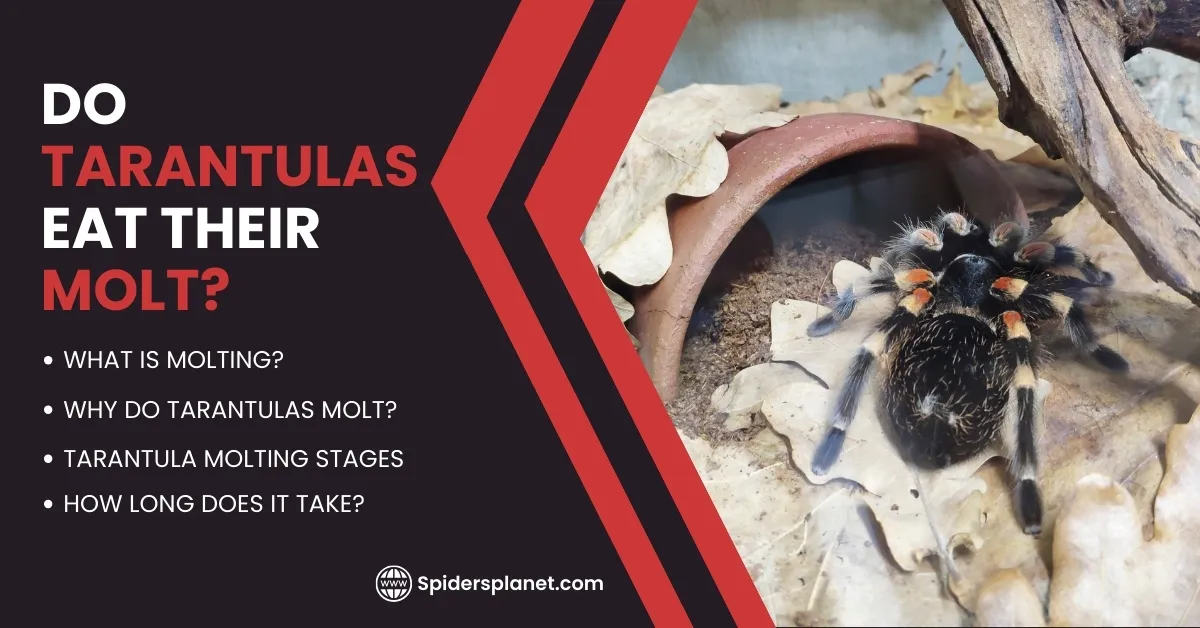
Besides nutrient reabsorption and hunger, other factors can influence whether a tarantula eats its molt. The species of tarantula, its age, and its environment play roles. Some tarantula species are naturally more inclined to eat their molts than others. Younger tarantulas are more likely to consume their molts than older ones. Environmental conditions, such as food availability and humidity, can also affect this behavior. In a food-rich environment, a tarantula might be less likely to eat its molt. Humidity levels, too, can play a part. If the air is too dry, the molt might become brittle and less appealing to eat. These factors interact to influence the tarantula’s behavior.
When Tarantulas Don’t Eat Their Molt
While it is common for tarantulas to eat their molt, there are instances when they do not. Several reasons may explain this behavior, and it does not always indicate a problem. Sometimes, the tarantula might be uninterested in consuming the molt because it is not hungry or has sufficient food available. In other cases, the tarantula might abandon the molt due to health issues or environmental factors. The condition of the molt itself can also influence the tarantula’s decision. If the molt is damaged or contaminated, the tarantula may choose to avoid it. The specific circumstances play a crucial role.
Potential Reasons for Leaving the Molt
There are several reasons why a tarantula might not eat its molt. One of the most common is that the tarantula is not hungry. If it has recently eaten or has an ample supply of food, it might not see the need to consume the molt. Another factor is the tarantula’s health. If the tarantula is sick or has a health condition, it might not have the energy or the inclination to eat. Environmental conditions, such as a very dry enclosure, could lead to a brittle molt, making it less appealing. The tarantula’s age is also a factor, as older tarantulas may be less inclined to consume their molt. The species’ tendencies, too, can vary, as some tarantula species are less likely to eat their molts than others.
Health Considerations
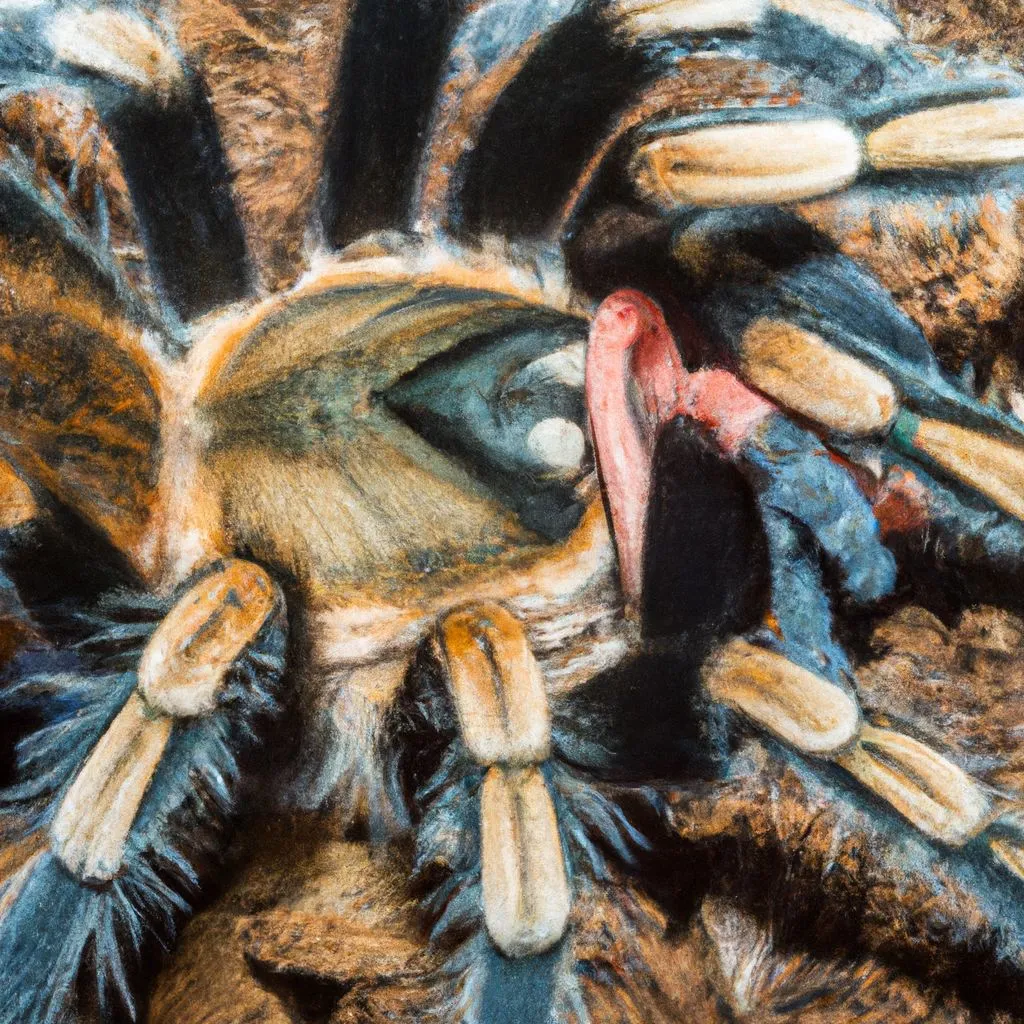
The decision of a tarantula to eat its molt can sometimes provide insights into its health. If a tarantula, that usually eats its molt, suddenly stops, it could signal a health problem. A lack of appetite or lethargy can be indicators of underlying health issues. It’s important to observe the tarantula for any other symptoms. A careful inspection of the molt itself is also important. Are there any signs of disease or parasites? Are there any deformities? These observations can provide clues about the tarantula’s condition. Consulting with a veterinarian specializing in exotic animals is advisable if you suspect a health problem.
What to Do with a Molt
What you do with a tarantula’s molt depends on your preferences and the specific circumstances. Many tarantula keepers choose to leave the molt in the enclosure, especially if the tarantula is likely to consume it. Leaving the molt allows the tarantula to reabsorb nutrients, which is beneficial for its overall health. However, if the tarantula doesn’t eat the molt and it is left in the enclosure for an extended period, it can lead to mold growth or attract unwanted pests. Removing the molt is another option. This is often done if the molt is damaged or if the keeper wishes to examine it for signs of health problems or growth issues. There are different approaches, and the best course of action depends on each individual situation.
Removing the Molt
Removing the molt involves carefully extracting it from the tarantula’s enclosure. This is best done once the tarantula has fully hardened its new exoskeleton. Using long tweezers or tongs, gently grasp the molt and lift it out. Be careful not to disturb the tarantula or damage the enclosure. Dispose of the molt appropriately. Avoid leaving it in a place where it could attract pests or create an unpleasant odor. Consider taking some time to examine the molt. This can provide insights into the tarantula’s health and growth. Handling the molt with care is important to prevent contamination or spread of any potential diseases. Make sure to clean your hands thoroughly after handling the molt.
Examining the Molt
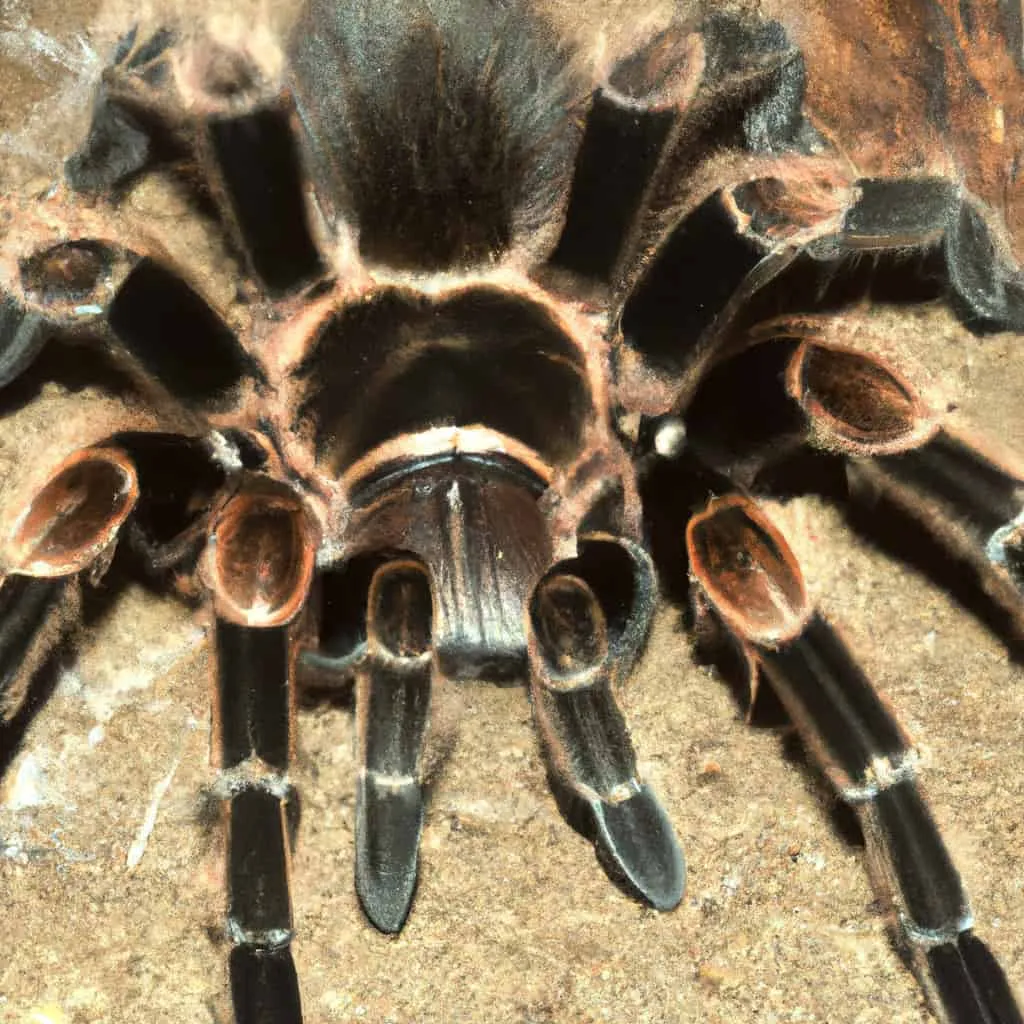
Examining a tarantula’s molt can offer valuable information about the tarantula’s health and growth. Look for any signs of abnormalities. Inspect the molt for any deformities, such as missing limbs or unusual growth patterns. Also, check for any signs of parasites or diseases. The molt can also provide information about the tarantula’s size and growth. The size of the shed exoskeleton gives an idea of how much the tarantula has grown. The condition of the setae (the hairs on the tarantula) and the overall appearance of the molt can provide insights into the tarantula’s general health. Observing these details can help in the early detection of potential problems.
Final Thoughts
Whether a tarantula eats its molt is a fascinating aspect of tarantula behavior. It’s driven by factors like nutrient reabsorption, hunger, and the species itself. While it is common to eat the molt, it is not always the case. Knowing the reasons behind the behavior can help you understand your tarantula better. It’s important to observe your tarantula’s behavior and environmental conditions to determine the best approach. Proper care and observation contribute to the long-term health and well-being of your tarantula. Learning about these behaviors is a key part of being a responsible tarantula owner. Consulting with an expert or veterinarian can offer additional guidance.
